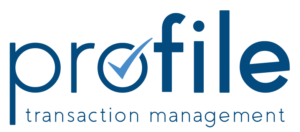P&L for Real Estate Agents – Do I Need One and How Do I Read It?
Let’s talk about the parts of a P&L –
Income statement:
Your income statement, or profit and loss statement, is the most familiar financial statement in any business plan. It’s the statement that bankers and investors will turn to first when reviewing your business plan.
The P&L reflects if your company is profitable or not. It includes a summary of your revenue, your costs and expenses, and the “bottom line” (your net profit). For a quick peek at how your business is doing financially flip to your P&L and look at the bottom. If you’re looking for a way to start an income statement, there are templates out there you can download or you could invest in planning software.
Here’s an overview and description of the different sections and where the numbers in them come from:
Revenue – The “top line” of the P&L, is the money that you’re bringing in from your sales.
This is typically money brought in from fundraising for non-profits. Usually, a company will have a separate table that details its sales and then bring the total sales number over to the P&L.
Naturally, revenue is a significant number as it’s what you need to cover your expenses. If you have a low revenue number, your expenses also need to be low in order to stay profitable.

Direct costs – Also known as cost of goods sold (COGS), the costs to make your products or deliver your services. This doesn’t include things like rent or payroll, but you would include the things that directly contribute to each sale.
Example: In a cake shop, the direct cost of every sale is what the bakery paid for the ingredients. For a manufacturer, direct costs would include the cost of the materials used to make the product.
However, if you’re a consultant, you likely have very low or even no direct costs. Potentially your costs could be associated with making paper copies of things like reports or information, but not many other costs.
Gross margin – The amount of money you have left over to cover expenses AFTER the cost of the product or service you are selling. To get this number, you’ll subtract your direct costs from your revenue.
Revenue – Direct Costs = Gross Margin
The gross margin percentage is simply that number as a percentage. Of course, the higher the number the better. To get the percentage you divide gross margin by revenue.
Gross Margin / Revenue = Gross Margin %
A high gross margin means there is little cost to you to deliver your product or service and the majority of the money from each sale is left over to cover your expenses.

Operating expenses – The expenses to keep your doors open. These expenses do not include the direct costs that we talked about earlier. Operating expenses are customarily costs that come from things like rent, salaries and benefits, marketing, research and development, and utilities, etc. You won’t include the interest you pay on loans or taxes here.
Expenses – Direct Costs = Operating Expenses
Operating income – Can also be called EBITDA (earnings before interest, taxes, depreciation, and amortization). This number is found by subtracting total operating expenses from your gross margin.
Gross Margin – Total Operating Expenses = Operating Income
Interest – This line is where you document interest payments your company is making on any outstanding loans.
Depreciation & Amortization – Independent costs associated with assets that your company owns. With time, assets tend to lose their value or depreciate. You’ll expense that decline in value here.
Taxes – Where you track the taxes that you pay or expect to pay on your sales.
Net profit – Also seen as net income or net earnings. This number is the “bottom line” that’s talked about. You started with your revenue as your “top line” and then subtracted things as you went – what’s left over is your profit! (Or loss if more was spent than earned.)
There we go! That is a breakdown of your profit and loss statement. Don’t forget, profits are not the same as cash. Even if you made a profit, that doesn’t mean the actual money is in the bank. It’s good practice to really dive into your cash flow statement to better understand the difference and how to maintain a healthy cash position.


